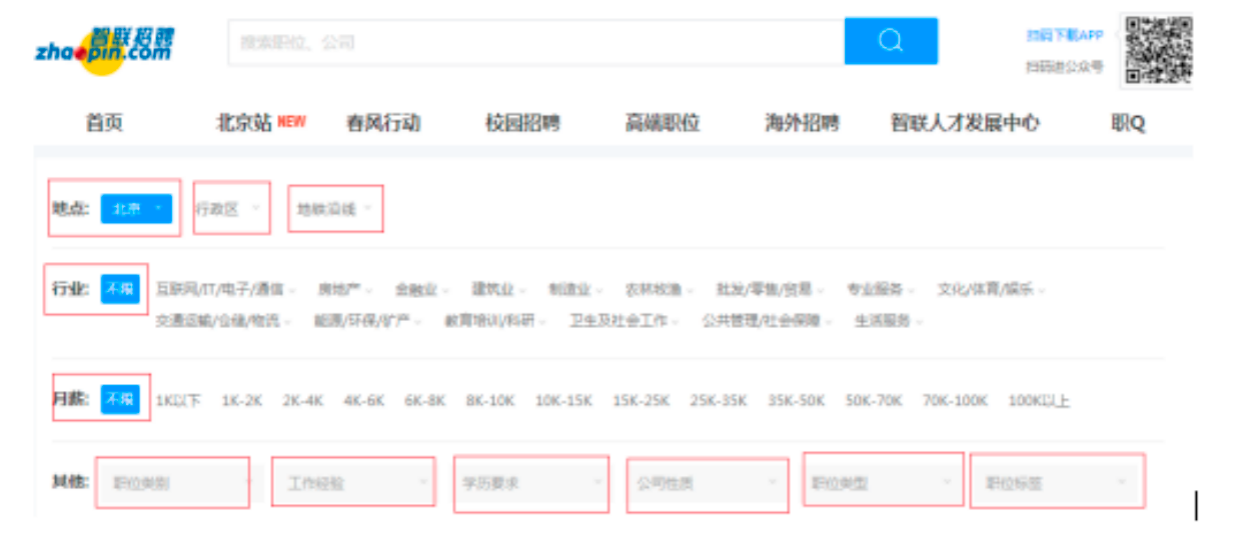三、MyBatis多表映射
3.1 多表映射概念
多表查询结果映射思路
前面说明中,我全面梳理了单表的mybatis操作!但是开发中更多的是多表查询需求,这种情况我们如何让进行处理?MyBatis 思想是:数据库不可能永远是你所想或所需的那个样子。 我们希望每个数据库都具备良好的第三范式或 BCNF 范式,可惜它们并不都是那样。 如果能有一种数据库映射模式,完美适配所有的应用程序查询需求,那就太好了,而 ResultMap 就是 MyBatis 就是完美答案。
官方例子:我们如何映射下面这个语句?
<!-- 非常复杂的语句 -->
<select id="selectBlogDetails" resultMap="detailedBlogResultMap">selectB.id as blog_id,B.title as blog_title,B.author_id as blog_author_id,A.id as author_id,A.username as author_username,A.password as author_password,A.email as author_email,A.bio as author_bio,A.favourite_section as author_favourite_section,P.id as post_id,P.blog_id as post_blog_id,P.author_id as post_author_id,P.created_on as post_created_on,P.section as post_section,P.subject as post_subject,P.draft as draft,P.body as post_body,C.id as comment_id,C.post_id as comment_post_id,C.name as comment_name,C.comment as comment_text,T.id as tag_id,T.name as tag_namefrom Blog Bleft outer join Author A on B.author_id = A.idleft outer join Post P on B.id = P.blog_idleft outer join Comment C on P.id = C.post_idleft outer join Post_Tag PT on PT.post_id = P.idleft outer join Tag T on PT.tag_id = T.idwhere B.id = #{id}
</select>你可能想把它映射到一个智能的对象模型,这个对象表示了一篇博客,它由某位作者所写,有很多的博文,每篇博文有零或多条的评论和标签。 我们先来看看下面这个完整的例子,它是一个非常复杂的结果映射(假设作者,博客,博文,评论和标签都是类型别名)。 虽然它看起来令人望而生畏,但其实非常简单。
<!-- 非常复杂的结果映射 -->
<resultMap id="detailedBlogResultMap" type="Blog"><constructor><idArg column="blog_id" javaType="int"/></constructor><result property="title" column="blog_title"/><association property="author" javaType="Author"><id property="id" column="author_id"/><result property="username" column="author_username"/><result property="password" column="author_password"/><result property="email" column="author_email"/><result property="bio" column="author_bio"/><result property="favouriteSection" column="author_favourite_section"/></association><collection property="posts" ofType="Post"><id property="id" column="post_id"/><result property="subject" column="post_subject"/><association property="author" javaType="Author"/><collection property="comments" ofType="Comment"><id property="id" column="comment_id"/></collection><collection property="tags" ofType="Tag" ><id property="id" column="tag_id"/></collection></collection>
</resultMap>你现在可能看不懂,接下来我们要学习将多表查询结果使用ResultMap标签映射到实体类对象上!
我们的学习目标:
- 多表查询语句使用
- 多表结果承接实体类设计
- 使用ResultMap完成多表结果映射
实体类设计方案
多表关系回顾:(双向查看)
- 一对一:夫妻关系,人和身份证号
- 一对多 | 多对一:用户和用户的订单,锁和钥匙
- 多对多:老师和学生,部门和员工 实体类设计关系(查询):(单向查看)
- 对一 : 夫妻一方对应另一方,订单对应用户都是对一关系实体类设计:对一关系下,类中只要包含单个对方对象类型属性即可!
- 例如:
public class Customer {private Integer customerId;private String customerName;}public class Order {private Integer orderId;private String orderName;private Customer customer;// 体现的是对一的关系}对多: 用户对应的订单,讲师对应的学生或者学生对应的讲师都是对多关系:
实体类设计:对多关系下,类中只要包含对方类型集合属性即可!
public class Customer {private Integer customerId;private String customerName;private List<Order> orderList;// 体现的是对多的关系
}public class Order {private Integer orderId;private String orderName;private Customer customer;// 体现的是对一的关系}//查询客户和客户对应的订单集合 不要管!多表结果实体类设计小技巧:
- 对一,属性中包含对方对象
- 对多,属性中包含对方对象集合
- 只有真实发生多表查询时,才需要设计和修改实体类,否则不提前设计和修改实体类!
- 无论多少张表联查,实体类设计都是两两考虑!
- 在查询映射的时候,只需要关注本次查询相关的属性!例如:查询订单和对应的客户,就不要关注客户中的订单集合!
多表映射案例准备
数据库:
CREATE TABLE `t_customer` (`customer_id` INT NOT NULL AUTO_INCREMENT, `customer_name` CHAR(100), PRIMARY KEY (`customer_id`) );CREATE TABLE `t_order` ( `order_id` INT NOT NULL AUTO_INCREMENT, `order_name` CHAR(100), `customer_id` INT, PRIMARY KEY (`order_id`) ); INSERT INTO `t_customer` (`customer_name`) VALUES ('c01');INSERT INTO `t_order` (`order_name`, `customer_id`) VALUES ('o1', '1');
INSERT INTO `t_order` (`order_name`, `customer_id`) VALUES ('o2', '1');
INSERT INTO `t_order` (`order_name`, `customer_id`) VALUES ('o3', '1');实际开发时,一般在开发过程中,不给数据库表设置外键约束。 原因是避免调试不方便。 一般是功能开发完成,再加外键约束检查是否有bug。
实体类设计:稍后会进行订单关联客户查询,也会进行客户关联订单查询,所以在这先练习设计。
@Data
public class Customer {private Integer customerId;private String customerName;private List<Order> orderList;// 体现的是对多的关系} @Data
public class Order {private Integer orderId;private String orderName;private Customer customer;// 体现的是对一的关系}3.2 对一映射
需求说明根据ID查询订单,以及订单关联的用户的信息!
OrderMapper接口
public interface OrderMapper {Order selectOrderWithCustomer(Integer orderId);
}OrderMapper.xml配置文件
<!-- 创建resultMap实现“对一”关联关系映射 -->
<!-- id属性:通常设置为这个resultMap所服务的那条SQL语句的id加上“ResultMap” -->
<!-- type属性:要设置为这个resultMap所服务的那条SQL语句最终要返回的类型 -->
<resultMap id="selectOrderWithCustomerResultMap" type="order"><!-- 先设置Order自身属性和字段的对应关系 --><id column="order_id" property="orderId"/><result column="order_name" property="orderName"/><!-- 使用association标签配置“对一”关联关系 --><!-- property属性:在Order类中对一的一端进行引用时使用的属性名 --><!-- javaType属性:一的一端类的全类名 --><association property="customer" javaType="customer"><!-- 配置Customer类的属性和字段名之间的对应关系 --><id column="customer_id" property="customerId"/><result column="customer_name" property="customerName"/></association></resultMap><!-- Order selectOrderWithCustomer(Integer orderId); -->
<select id="selectOrderWithCustomer" resultMap="selectOrderWithCustomerResultMap">SELECT order_id,order_name,c.customer_id,customer_nameFROM t_order oLEFT JOIN t_customer cON o.customer_id=c.customer_idWHERE o.order_id=#{orderId}</select>Mybatis全局注册Mapper文件
<!-- 注册Mapper配置文件:告诉Mybatis我们的Mapper配置文件的位置 -->
<mappers><!-- 在mapper标签的resource属性中指定Mapper配置文件以“类路径根目录”为基准的相对路径 --><mapper resource="mappers/OrderMapper.xml"/></mappers>junit测试程序
@Slf4j
public class MyBatisTest {private SqlSession session;// junit会在每一个@Test方法前执行@BeforeEach方法@BeforeEachpublic void init() throws IOException {session = new SqlSessionFactoryBuilder().build(Resources.getResourceAsStream("mybatis-config.xml")).openSession();}@Testpublic void testRelationshipToOne() {OrderMapper orderMapper = session.getMapper(OrderMapper.class);// 查询Order对象,检查是否同时查询了关联的Customer对象Order order = orderMapper.selectOrderWithCustomer(2);log.info("order = " + order);}// junit会在每一个@Test方法后执行@@AfterEach方法@AfterEachpublic void clear() {session.commit();session.close();}
}关键词:在“对一”关联关系中,我们的配置比较多,但是关键词就只有:association和javaType
3.3 对多映射
需求说明查询客户和客户关联的订单信息!
CustomerMapper接口
public interface CustomerMapper {Customer selectCustomerWithOrderList(Integer customerId);}CustomerMapper.xml文件
<!-- 配置resultMap实现从Customer到OrderList的“对多”关联关系 -->
<resultMap id="selectCustomerWithOrderListResultMap"type="customer"><!-- 映射Customer本身的属性 --><id column="customer_id" property="customerId"/><result column="customer_name" property="customerName"/><!-- collection标签:映射“对多”的关联关系 --><!-- property属性:在Customer类中,关联“多”的一端的属性名 --><!-- ofType属性:集合属性中元素的类型 --><collection property="orderList" ofType="order"><!-- 映射Order的属性 --><id column="order_id" property="orderId"/><result column="order_name" property="orderName"/></collection></resultMap><!-- Customer selectCustomerWithOrderList(Integer customerId); -->
<select id="selectCustomerWithOrderList" resultMap="selectCustomerWithOrderListResultMap">SELECT c.customer_id,c.customer_name,o.order_id,o.order_nameFROM t_customer cLEFT JOIN t_order oON c.customer_id=o.customer_idWHERE c.customer_id=#{customerId}
</select>Mybatis全局注册Mapper文件
<!-- 注册Mapper配置文件:告诉Mybatis我们的Mapper配置文件的位置 -->
<mappers><!-- 在mapper标签的resource属性中指定Mapper配置文件以“类路径根目录”为基准的相对路径 --><mapper resource="mappers/OrderMapper.xml"/><mapper resource="mappers/CustomerMapper.xml"/>
</mappers>junit测试程序
@Test
public void testRelationshipToMulti() {CustomerMapper customerMapper = session.getMapper(CustomerMapper.class);// 查询Customer对象同时将关联的Order集合查询出来Customer customer = customerMapper.selectCustomerWithOrderList(1);log.info("customer.getCustomerId() = " + customer.getCustomerId());log.info("customer.getCustomerName() = " + customer.getCustomerName());List<Order> orderList = customer.getOrderList();for (Order order : orderList) {log.info("order = " + order);}
}关键词:在“对多”关联关系中,同样有很多配置,但是提炼出来最关键的就是:“collection”和“ofType”
3.4 多表映射总结
3.4.1 多表映射优化
| setting属性 | 属性含义 | 可选值 | 默认值 |
| autoMappingBehavior | 指定 MyBatis 应如何自动映射列到字段或属性。 NONE 表示关闭自动映射;PARTIAL 只会自动映射没有定义嵌套结果映射的字段。 FULL 会自动映射任何复杂的结果集(无论是否嵌套)。 | NONE, PARTIAL, FULL | PARTIAL |
我们可以将autoMappingBehavior设置为full,进行多表resultMap映射的时候,可以省略符合列和属性命名映射规则(列名=属性名,或者开启驼峰映射也可以自定映射)的result标签!
修改mybati-sconfig.xml:
<!--开启resultMap自动映射 -->
<setting name="autoMappingBehavior" value="FULL"/>修改teacherMapper.xml
<resultMap id="teacherMap" type="teacher"><id property="tId" column="t_id" /><!-- 开启自动映射,并且开启驼峰式支持!可以省略 result!-->
<!-- <result property="tName" column="t_name" />--><collection property="students" ofType="student" ><id property="sId" column="s_id" />
<!-- <result property="sName" column="s_name" />--></collection>
</resultMap>3.4.2 多表映射总结
| 关联关系 | 配置项关键词 | 所在配置文件和具体位置 |
| 对一 | association标签/javaType属性/property属性 | Mapper配置文件中的resultMap标签内 |
| 对多 | collection标签/ofType属性/property属性 | Mapper配置文件中的resultMap标签内 |
四、MyBatis动态语句
4.1 动态语句需求和简介
经常遇到很多按照很多查询条件进行查询的情况,比如智联招聘的职位搜索等。其中经常出现很多条件不取值的情况,在后台应该如何完成最终的SQL语句呢?

动态 SQL 是 MyBatis 的强大特性之一。如果你使用过 JDBC 或其它类似的框架,你应该能理解根据不同条件拼接 SQL 语句有多痛苦,例如拼接时要确保不能忘记添加必要的空格,还要注意去掉列表最后一个列名的逗号。利用动态 SQL,可以彻底摆脱这种痛苦。
使用动态 SQL 并非一件易事,但借助可用于任何 SQL 映射语句中的强大的动态 SQL 语言,MyBatis 显著地提升了这一特性的易用性。
如果你之前用过 JSTL 或任何基于类 XML 语言的文本处理器,你对动态 SQL 元素可能会感觉似曾相识。在 MyBatis 之前的版本中,需要花时间了解大量的元素。借助功能强大的基于 OGNL 的表达式,MyBatis 3 替换了之前的大部分元素,大大精简了元素种类,现在要学习的元素种类比原来的一半还要少。
4.2 if和where标签
使用动态 SQL 最常见情景是根据条件包含 where / if 子句的一部分。比如:
<!-- List<Employee> selectEmployeeByCondition(Employee employee); -->
<select id="selectEmployeeByCondition" resultType="employee">select emp_id,emp_name,emp_salary from t_emp<!-- where标签会自动去掉“标签体内前面多余的and/or” --><where><!-- 使用if标签,让我们可以有选择的加入SQL语句的片段。这个SQL语句片段是否要加入整个SQL语句,就看if标签判断的结果是否为true --><!-- 在if标签的test属性中,可以访问实体类的属性,不可以访问数据库表的字段 --><if test="empName != null"><!-- 在if标签内部,需要访问接口的参数时还是正常写#{} -->or emp_name=#{empName}</if><if test="empSalary > 2000">or emp_salary>#{empSalary}</if><!--第一种情况:所有条件都满足 WHERE emp_name=? or emp_salary>?第二种情况:部分条件满足 WHERE emp_salary>?第三种情况:所有条件都不满足 没有where子句--></where>
</select>4.3 set标签
<!-- void updateEmployeeDynamic(Employee employee) -->
<update id="updateEmployeeDynamic">update t_emp<!-- set emp_name=#{empName},emp_salary=#{empSalary} --><!-- 使用set标签动态管理set子句,并且动态去掉两端多余的逗号 --><set><if test="empName != null">emp_name=#{empName},</if><if test="empSalary < 3000">emp_salary=#{empSalary},</if></set>where emp_id=#{empId}<!--第一种情况:所有条件都满足 SET emp_name=?, emp_salary=?第二种情况:部分条件满足 SET emp_salary=?第三种情况:所有条件都不满足 update t_emp where emp_id=?没有set子句的update语句会导致SQL语法错误-->
</update>4.4 trim标签(了解)
使用trim标签控制条件部分两端是否包含某些字符
- prefix属性:指定要动态添加的前缀
- suffix属性:指定要动态添加的后缀
- prefixOverrides属性:指定要动态去掉的前缀,使用“|”分隔有可能的多个值
- suffixOverrides属性:指定要动态去掉的后缀,使用“|”分隔有可能的多个值
<!-- List<Employee> selectEmployeeByConditionByTrim(Employee employee) -->
<select id="selectEmployeeByConditionByTrim" resultType="com.atguigu.mybatis.entity.Employee">select emp_id,emp_name,emp_age,emp_salary,emp_genderfrom t_emp<!-- prefix属性指定要动态添加的前缀 --><!-- suffix属性指定要动态添加的后缀 --><!-- prefixOverrides属性指定要动态去掉的前缀,使用“|”分隔有可能的多个值 --><!-- suffixOverrides属性指定要动态去掉的后缀,使用“|”分隔有可能的多个值 --><!-- 当前例子用where标签实现更简洁,但是trim标签更灵活,可以用在任何有需要的地方 --><trim prefix="where" suffixOverrides="and|or"><if test="empName != null">emp_name=#{empName} and</if><if test="empSalary > 3000">emp_salary>#{empSalary} and</if><if test="empAge <= 20">emp_age=#{empAge} or</if><if test="empGender=='male'">emp_gender=#{empGender}</if></trim>
</select>4.5 choose/when/otherwise标签
在多个分支条件中,仅执行一个。
- 从上到下依次执行条件判断
- 遇到的第一个满足条件的分支会被采纳
- 被采纳分支后面的分支都将不被考虑
- 如果所有的when分支都不满足,那么就执行otherwise分支
<!-- List<Employee> selectEmployeeByConditionByChoose(Employee employee) -->
<select id="selectEmployeeByConditionByChoose" resultType="com.atguigu.mybatis.entity.Employee">select emp_id,emp_name,emp_salary from t_empwhere<choose><when test="empName != null">emp_name=#{empName}</when><when test="empSalary < 3000">emp_salary < 3000</when><otherwise>1=1</otherwise></choose><!--第一种情况:第一个when满足条件 where emp_name=?第二种情况:第二个when满足条件 where emp_salary < 3000第三种情况:两个when都不满足 where 1=1 执行了otherwise-->
</select>4.6 foreach标签
基本用法
用批量插入举例
<!--collection属性:要遍历的集合item属性:遍历集合的过程中能得到每一个具体对象,在item属性中设置一个名字,将来通过这个名字引用遍历出来的对象separator属性:指定当foreach标签的标签体重复拼接字符串时,各个标签体字符串之间的分隔符open属性:指定整个循环把字符串拼好后,字符串整体的前面要添加的字符串close属性:指定整个循环把字符串拼好后,字符串整体的后面要添加的字符串index属性:这里起一个名字,便于后面引用遍历List集合,这里能够得到List集合的索引值遍历Map集合,这里能够得到Map集合的key-->
<foreach collection="empList" item="emp" separator="," open="values" index="myIndex"><!-- 在foreach标签内部如果需要引用遍历得到的具体的一个对象,需要使用item属性声明的名称 -->(#{emp.empName},#{myIndex},#{emp.empSalary},#{emp.empGender})
</foreach>批量更新时需要注意
上面批量插入的例子本质上是一条SQL语句,而实现批量更新则需要多条SQL语句拼起来,用分号分开。也就是一次性发送多条SQL语句让数据库执行。此时需要在数据库连接信息的URL地址中设置:
atguigu.dev.url=jdbc:mysql:///mybatis-example?allowMultiQueries=true对应的foreach标签如下:
<!-- int updateEmployeeBatch(@Param("empList") List<Employee> empList) -->
<update id="updateEmployeeBatch"><foreach collection="empList" item="emp" separator=";">update t_emp set emp_name=#{emp.empName} where emp_id=#{emp.empId}</foreach>
</update>关于foreach标签的collection属性
如果没有给接口中List类型的参数使用@Param注解指定一个具体的名字,那么在collection属性中默认可以使用collection或list来引用这个list集合。这一点可以通过异常信息看出来:
Parameter 'empList' not found. Available parameters are [arg0, collection, list]在实际开发中,为了避免隐晦的表达造成一定的误会,建议使用@Param注解明确声明变量的名称,然后在foreach标签的collection属性中按照@Param注解指定的名称来引用传入的参数。
4.7 sql片段
抽取重复的SQL片段
<!-- 使用sql标签抽取重复出现的SQL片段 -->
<sql id="mySelectSql">select emp_id,emp_name,emp_age,emp_salary,emp_gender from t_emp
</sql>引用已抽取的SQL片段
<!-- 使用include标签引用声明的SQL片段 -->
<include refid="mySelectSql"/>
本文为学习笔记,所参考文章均已附上链接,若有疑问请私信!
创作不易,如果对你有点帮助的话麻烦点个赞支持一下!
新手小白,欢迎留言指正!

【Linux系统基础操作一】)
)
屏幕镜像到PC端)










:若依框架搭建、启动、部署)

)


